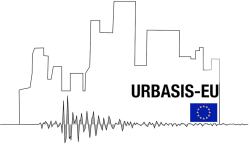WP1 - Low Probabilty / High Consequences earthquakes
Critical Infrastructure (CI) provides essential goods and services for modern society ; they are highly integrated and have growing mutual dependencies. Recent major earthquakes (e.g., the Tohoku 2011 earthquake) have shown that cascading failures of CI have the potential for multi-infrastructure collapse and widespread societal and economic consequences. Moving towards a safer and more resilient society requires improved and standardised tools for hazard assessment of low probability/ high consequence (LPHC) earthquakes that affect the CI but also structures and infrastructure. This WP will therefore aim :
- to quantify the properties of shallow moderate crustal earthquakes (with a focus on stable continental regions), their variability, and their influence on hazard assessment.
- to analyse the ground motion recorded in the stable continental part of Europe where available ground-motion is rare, and to analyse their regional variations.
- to quantify how site monitoring and on-site geotechnical and geophysical measurements help to characterise site-specific properties and to reduce the uncertainties that affect site-specific studies (performed mostly within industrial projects).
- to assess the spatial variability and correlation of hazard intensities (e.g., ground motion intensities and durations) in order to evaluate aggregated probabilities of exceeding limit values across an extended footprint (e.g., pipeline, road or railway, bridges, tunnels).
- to explore the strengths and weaknesses of existing approaches for the assessment of hazard epistemic uncertainties – including logic trees, Bayesian inference and formalised expert elicitation (e.g., SSHAC).
- to propose 3D-physics-based ground-shaking scenarios for seismic risk assessment in urban areas.
Updated on 5 juillet 2022






